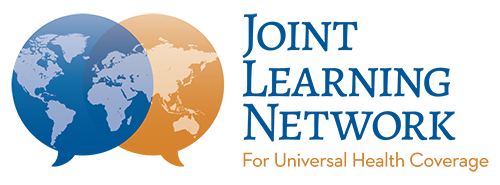A Health Practitioner’s Handbook and Toolbox for Identifying the Poor and Vulnerable >
Ghana Data Linkage Implementation Case Study
Ghana Data Linkage Implementation Case Study
Ghana’s National Health Insurance Scheme (NHIS) was established in 2003 and has grown steadily to now cover over 16 million active beneficiaries, out of a total population of 31 million. 64.9 percent of these beneficiaries are exempt from paying premiums, of which 1.3 million (or 8.3 percent of beneficiaries) are deemed to be poor or vulnerable.
The current system of identifying these poor and vulnerable groups is fragmented, resource intensive and results in significant gaps in coverage. Targeting methods include eligibility for all households that qualify for Ghana’s main cash transfer scheme, Livelihood Empowerment Against Poverty (LEAP), which is administered by the Ministry of Gender Children and Social Protection (MoGCSP). MoGCSP takes responsibility for identifying eligible households, and shares the names of beneficiaries with the NHIS. However these are not automatically enrolled but rather NHIS must wait until the individual applies and then manually check their details against the LEAP list. Other poor and vulnerable people are identified by local opinion leaders (such as local chiefs) and sent as a list to NHIS. These are sent on to MoGCSP and must then be manually and individually endorsed by local development or social workers from MoGCSP before being sent back to the National Health Insurance Authority (NHIA) for enrollment.
There are a number of major limitations with this system which officials in the NHIA and MoGCSP are keen to resolve. It places a high administrative burden on both agencies due to the volume of manual checking that is required between their databases, none of which are currently interoperable. It is also frequently inaccurate, as mismatches are common between the information given by the individual to NHIA and the data on the LEAP database. The use of local opinion leaders is also slow, somewhat subjective and misses a great many poor and vulnerable households who should qualify but whose names are not put forward or cannot be endorsed. As a result of these issues, as many as 3.5 million eligible people are missing from NHIA’s lists of poor and vulnerable persons, it is estimated.
At the same time, two important reforms are ongoing which create the opportunity for a much more efficient, accurate and joined-up approach to population targeting in Ghana.
-
- The MoGCSP is rolling out a national social registry of the poor and vulnerable, called the Ghana National Household Registry (GNHR). This is a far more rigorous and comprehensive method of poverty assessment than the opinion leaders approach currently used by NHIA – however with no link between the NHIS and GNHR databases, there is currently no means to easily absorb those households deemed poor in the social registry into the NHIS membership database.
- Ghana is also rolling out a National Identification System, the Ghanacard, in which every individual will receive a unique digital identifier, with biometric verification. The initiative is administered by the National Identification Authority (NIA), which began issuing cards in 2017 and to date has registered more than 15 million people.
Seeing the opportunity that these reforms create, from April to October 2021 officials from the NHIA, MoGCSP and NIA participated in an implementation case learning process with the JLN Learning Collaborative on Population Targeting. The purpose of this was to support the planning process of creating a linkage between all three systems, in which the national unique identity numbers would be adopted by both the NHIS membership database and GNHR social registry, and this common ID would then be used to enable matching between the two. This would enable automatic enrollment of all the poor and vulnerable groups identified by MoGCSP into health coverage with fewer errors of exclusion, no need for manual verification and endorsement, and eventually, through comparing with the complete population database held by NIA, to identify remaining gaps in health coverage (whether exempted from premiums or not).
Led by NHIA Director of Membership and Regional Operations, Ben Kusi, the Ghana team offered regular presentations on their plans as they developed, allowing participants of the LCPT to learn from and support the implementation as it developed. Focused sessions were held on areas where external perspectives were most needed, namely (i) data matching and records verification, as there were likely to be mismatches between the GNHR and NHIS databases at first, and (ii) potential shared savings that would be generated, to be used in a business case to support the funding required for the development costs of a full rollout.
The pilot process is now underway and working through a seven-stage action plan which was developed and adapted through the implementation case learning process. Already the NHIA has agreed the data fields to be shared with the GNHR and has begun ‘cleaning’ its own beneficiary database using the national ID numbers. This means that already as of October 2021 around 150,000 NHIS beneficiaries can now avail health services using their Ghanacard rather than their NHIS one. The next steps include testing the level of mismatches in the data that remain after ID numbers are included then creating protocols to resolve these, and ultimately developing an algorithm that can automate this process so that the three systems can be continuously linked and kept up to date (planned for September 2022).
